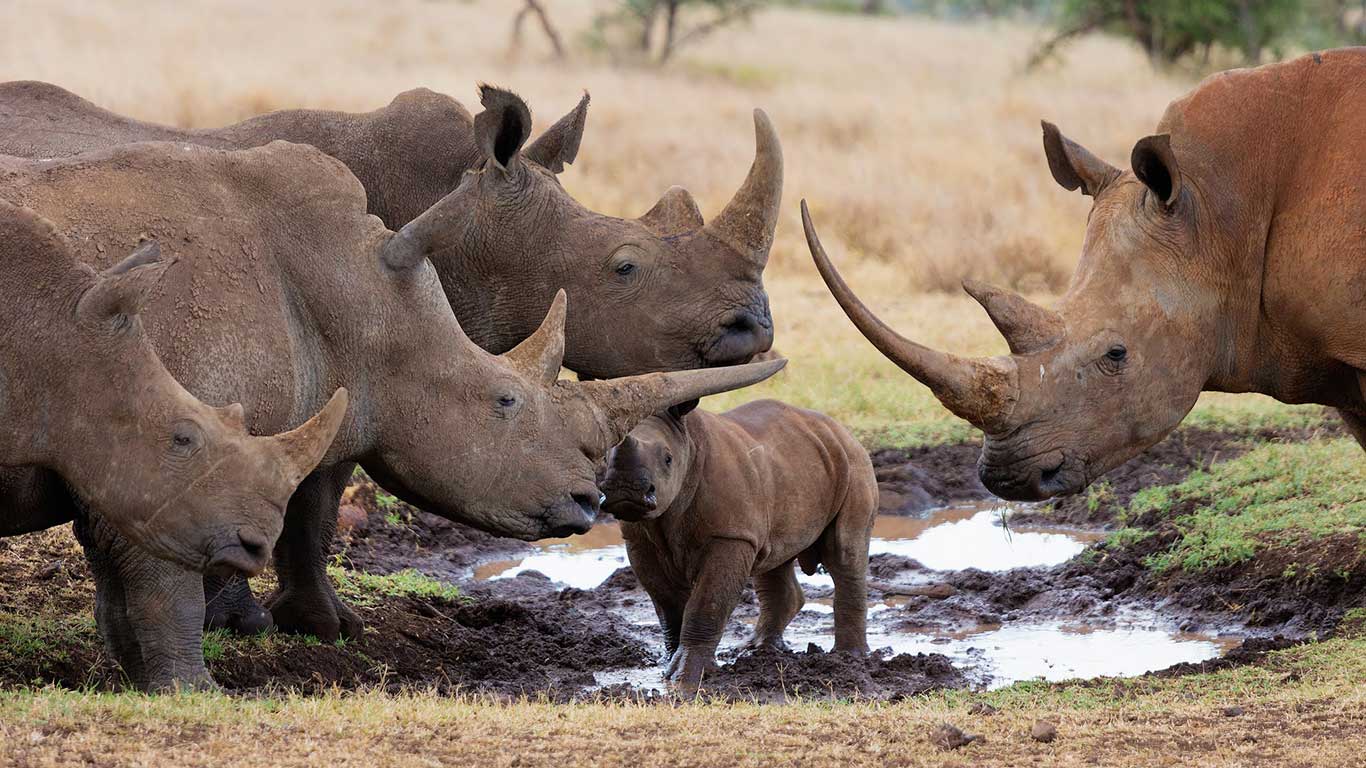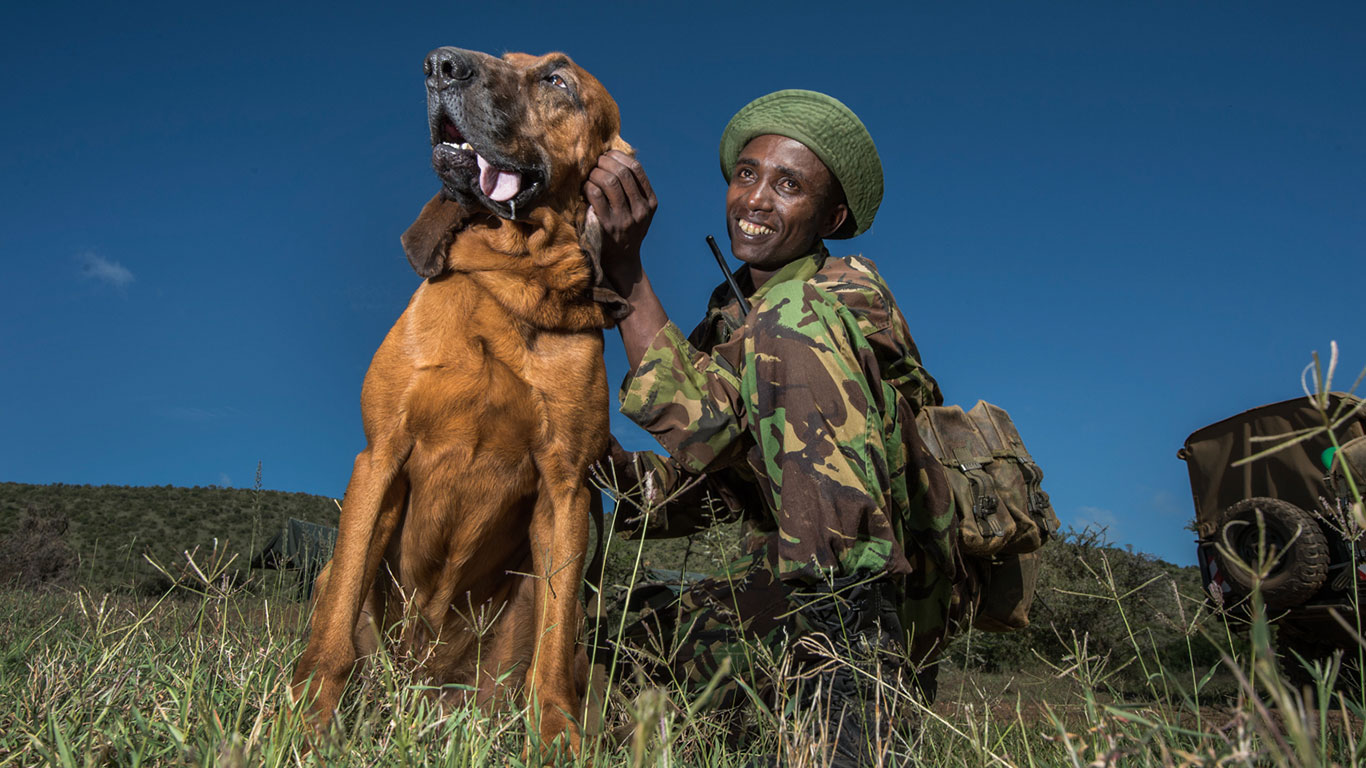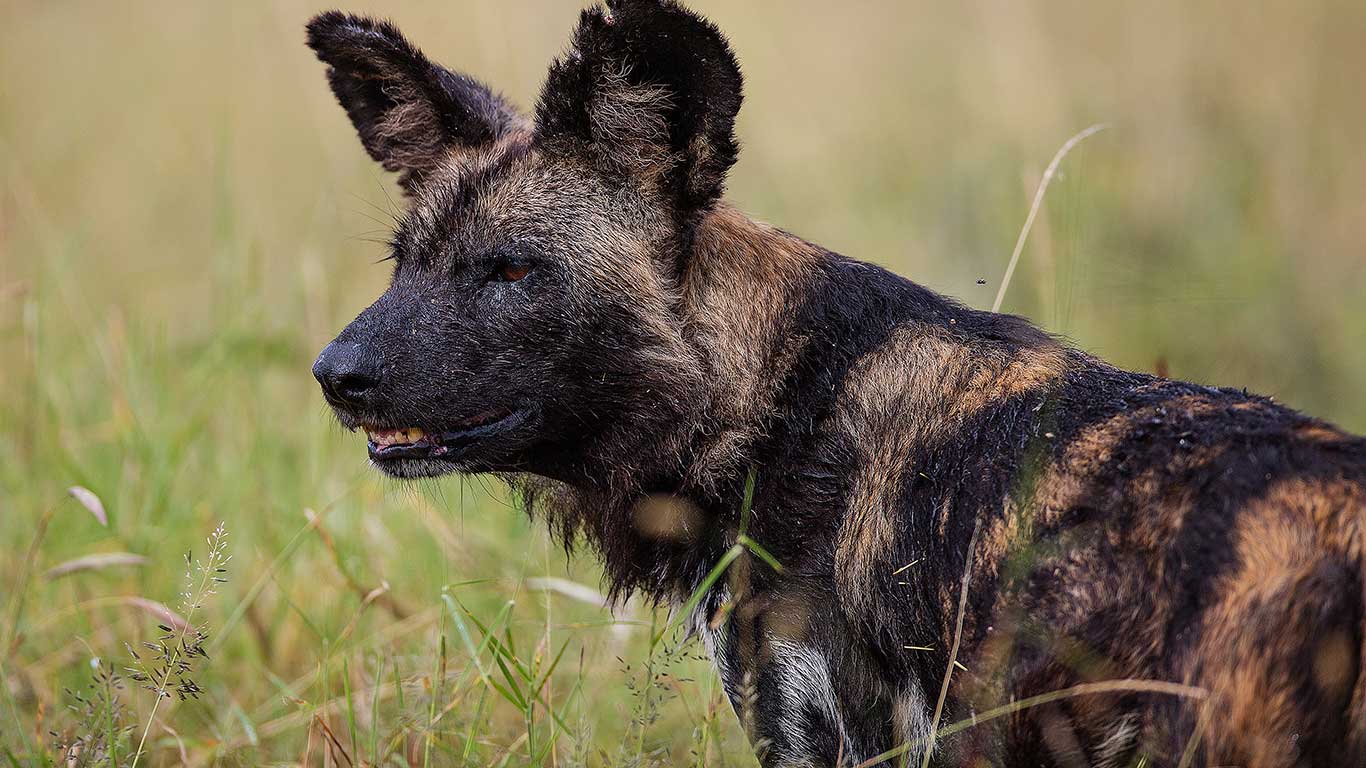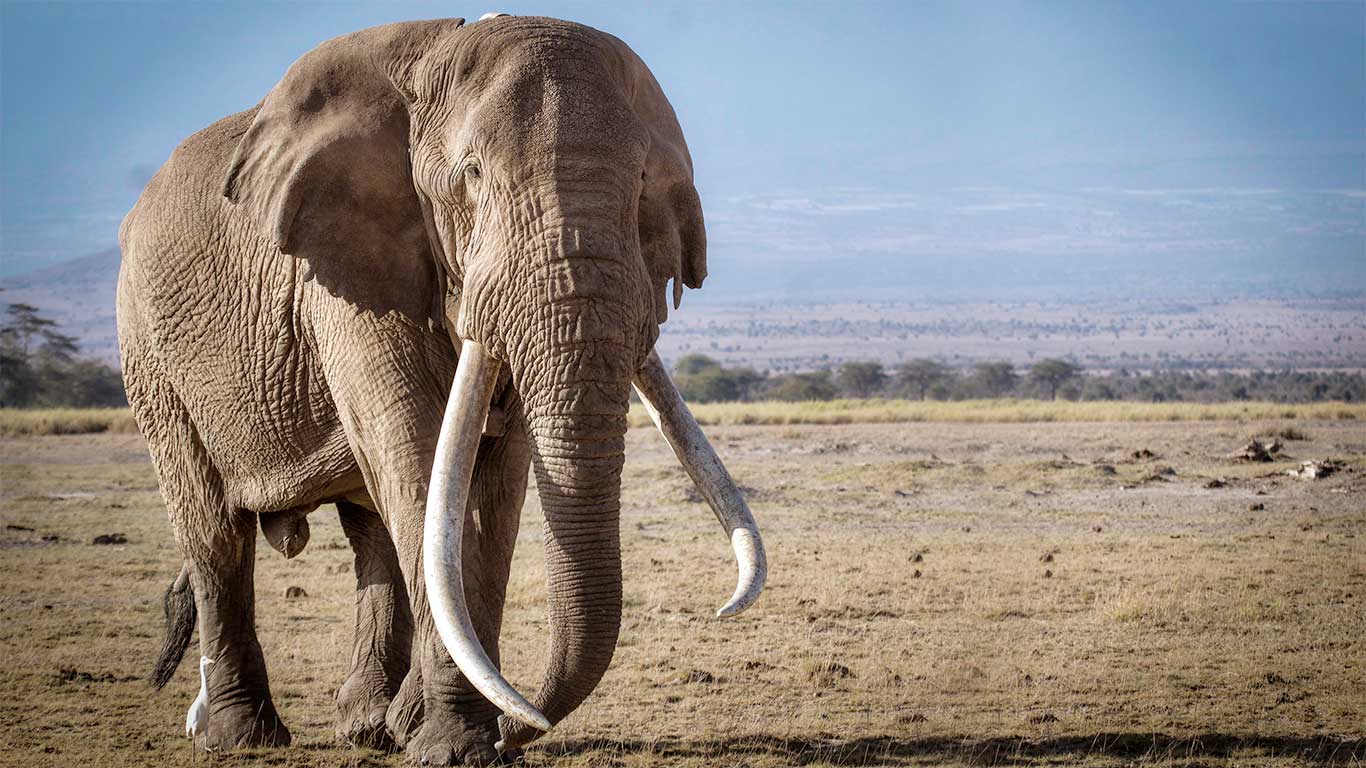Celebrating 17 Rhino Births & Zero poaching in Lewa Wildlife Conservancy

Lewa Wildlife Conservancy had record rhino births throughout 2018, and zero poaching. Together with Borana Conservancy, the combined area is now home to more than 170 rhinos. It’s great to see the rhino conservation efforts pay off, and we look forward to reaching the 200 rhino’s milestone.
Home to 10% of Kenya’s rhino, the conservancy covers 65,000 acres, a vast wilderness with dramatic views to the south of snow-capped Mt. Kenya, and to the north down to the arid lands of Tassia and Il Ngwesi. It has many diverse habitats from pristine forest, fertile grasslands, extensive springs and acacia woodland to explore and Elewana Collection has two properties in Lewa Wildlife Conservancy, Lewa Safari Camp and the award winning Kifaru House;
Elewana Kifaru House
Guests can relax and feel at home, choosing how they spend their time, whether it is lying by the picturesque infinity pool gazing out over the plains or sitting in the library leisurely reading a book, time stands still at Elewana Kifaru House. Each of the five cottages offer spectacular views with well-appointed bedrooms, complete with opulent four poster beds and generous en-suite bathrooms. Intimate and homely atmosphere offering true luxury in the bush with unrivalled wildlife viewing.
Elewana Lewa Safari Camp
Elewana Lewa Safari Camp is a unique and exclusive retreat, which offers privileged access to 65,000 acres of private protected wilderness. Featuring large tented bedrooms each with its own veranda and full en-suite bathrooms. Enjoy a host of activities from walking safaris, horse or camel rides, visit to the new joint operations centre and cultural experiences or simply relax by the swimming pool and enjoy the tranquillity.
Lewa Wildlife Conservancy wins $250,000 in the Google Impact Challenge

In November 2018, Lewa was a winner of $250,000 in the Google Impact Challenge, Kenya. They joined the challenge to enable them to scale their Digital Literacy Programme across the wider northern Kenya landscape, and help to provide access to quality digital education to children and youth in remote areas.
Digital technologies are changing the way people live, work and learn. Young people who are not ‘digitally literate’ risk being isolated in a society driven by these technologies. Lewa’s programme supports and complements the Kenya government’s vision of making sure every pupil is prepared for today’s digital world. Funding from the Google Impact Challenge will allow Lewa to increase the scale of their programme and achieve greater impact.
Conservation Conversations: The Impact of Social Media on Conservation

Social Media can be a powerful tool for wildlife protection, as well as a dangerous platform for illegal wildlife trade and instigators of unrest. If you would like to join the debate on the growing role of social media in the conservation of the wildlife and wild places that we hold dear, Tickets are now on sale for the next Lewa Conservation Conversation at the Royal Geographical Society in London.
Speakers include;
- Wanjiku Kinuthia; Lewa’s Head of Marketing)
- Ian Lemaiyan; Lewa’s Head of Rhino Research, Self-Made Conservationists and Instagram Star)
- Tania McCree-Steele (IFAW, International Project Manager, Wildlife Crime)
- Mark Haviland (Rakuten, EVP of Global Development)
Date & Time: 27 February 2019 (18:45 – 21:00 GMT)
New additions to the Anti-Poaching Team in Lewa Wildlife Conservancy

Lewa Conservancy and The Northern Rangelands Trust have new additions to the Anti-Poaching team; Ruby, a full Bloodhound, and Sacha, a mix of a Dobermann and Bloodhound. Ruby and Sacha will replace brothers Tipper and Tony, the two Bloodhounds that have worked with the rangers for years, but are now due for retirement. The new dogs received training last month, and are already proving to be excellent trackers.
Tracker dogs, particularly Bloodhounds, continue to prove invaluable to anti-poaching and community security work. Their extraordinary ability to read terrain and track scents has enabled the rangers and local law enforcement agencies to do what was previously incredibly difficult.
Tipper and Tony have worked hard for the past six years, and the brothers’ have made it possible to catch poachers and other criminals, find illegal ivory, and rescue hundreds of stolen livestock in northern Kenya, saving many livestock farmers from bankruptcy.
Rangers and dog handlers Aloise and Ngila are delighted with the new additions to the team, and we will keep you updated on their progress and work.
Loisaba Conservancy listed in the top 100 Sustainable Destinations
![]()
Loisaba Conservancy has been selected into the 2018 Top 100 Sustainable Destinations. For the 4th time, the Sustainable Destinations Global Top 100 competition is organised by ten leading sustainable tourism organisations and networks. Their main aim is to highlight success stories, and to exchange good practices to make all destinations more sustainable, and better for local communities and travellers. A second aim is to help destinations to improve: destinations that register for the Top 100 will learn how to develop their tourism through local community involvement. It is in the destination’s interest to avoid ‘overtourism’ and local resistance. The theme for the 2018 competition was: “Tourism to benefit local communities”
The winners will be celebrated – and will receive their Certificate at the ITB Earth Award – Top 100 Awards ceremony, 6 March at ITB Berlin, the world’s leading travel trade show. http://sustainabletop100.org/dest/loisaba-conservancy/
Elewana Collection has two award winning properties in Loisaba Conservancy, with a third to open in June, where you can stay and explore this incredible destination and indulge in the adventures that await. Learn more about the cutting-edge conservation efforts in the area and our Partners, who strive to protect our wildlife and work with the communities to ensure this prime ecosystem is safe for generations to come.
Elewana Loisaba Tented Camp
Perched on the edge of an escarpment, Elewana Loisaba Tented Camp enjoys a breath-taking vantage point over an expansive panorama. Sophisticated and stylish, the capacious custom-built luxury tents offer a relaxing vantage point to appreciate the splendour of the Laikipia Plateau. Experience an array of activities, from games drives to camel-trekking, guided bush walks to Cultural visits. The spacious main areas include a large dining area, separate open lounge and bar, a large wooden decking area, in addition to one of Africa’s most picturesque infinity pools.
Elewana Loisaba StarBeds
Poised on a rocky kopje, the Star Beds command sweeping views over an undulating valley and a permanent waterhole, frequented by resident wildlife. Rustically designed to complement the surrounding environment, each star bed is individually built in harmony with the natural rocky features, incorporating a sitting area, and open plan bathroom with a view. Handcrafted four-poster wooden beds sit on raised wooden platforms jutting out from a thatched-roof accommodation and are rolled out each night for guests to sleep under the endless African sky.
Elewana Loisaba Lodo Springs (Exclusive new property to open 15 June 2019)
An ultra-private experience is offered at Elewana Loisaba Lodo Springs with eight individual, spacious rooms with impressive views that reach across the magical landscape of northern Kenya stretching out to Mount Kenya. Service is paramount, with every room assigned an Elewana Guest Ambassador to serve and cater to every guests’ need, as well as a dedicated safari vehicle and driver and a highly qualified Elewana field guide who will accompany guests for the duration of their stay. Loisaba sits on a vital Elephant Corridor connecting the famous Laikipia Plateau and plays a key role in supporting one of Kenya's largest and most stable lion populations. The Conservancy is also home to several critically endangered large Mammals, including Grevy’s zebra, wild dog, leopard and cheetah.
African Wild Dogs Return to Loisaba

Huge influxes of cattle during the drought in 2017 meant that many of the African wild dogs in Laikipia were wiped out by canine distemper virus (CDV) spread from the herdsmens’ domestic dogs. However, after nearly a year of no sightings, staff at the Elewana Loisaba Star Beds were excited to hear the unique calls of a pack of wild dogs! Before hunts, wild dogs often engage in a ‘greeting ceremony’, where many sounds are produced by the dogs including whimpers, whines and high pitched twitters, which are unique and easy to identify.
The African wild dog (Lycaon pictus), also known as the cape hunting dog or painted wolf, is one of the world’s most endangered carnivore species. Once found widely distributed across sub-Saharan Africa in woodland, savannah, shrubland and grassland, they are now listed as an endangered species by the International Union for Conservation of Nature (IUCN) as they have sadly disappeared from over 90% of their former range. They are now only found in fragmented populations mainly in southern and eastern Africa, and are thought to number fewer than 6,600 individuals.
Although wild dogs are now a protected species, they remain at risk of extinction due to increased conflict with humans in competition for space. Their ranging behaviour in pursuit of prey means they require very large areas to support viable populations. Increased use of land for farming and the expanding human population means that wild dogs are being forced into small, unconnected areas. As a result of their extensive territories, even large fragments may only contain very few individuals; too small to sustain a viable wild dog population as not enough genetic variation is present to provide a sustainable population, leading to localised extinctions.
The highest priority for the conservation of African wild dogs is dealing with habitat fragmentation. A crucial part of the work that is done at Loisaba Conservancy is protecting vital wildlife corridors for all species to safely cross.
Living with Leopards

Although leopard populations are extremely successful in protected areas, the International Union for Conservation of Nature (IUCN) classifies them as a near threatened species. When leopards kill livestock, they risk being killed by ranchers. They also compete with humans for food and are hunted by poachers for their distinctive coats as well as for traditional medicine and religious purposes.
Leopards are believed to be the most abundant large cats in Africa, though they’re extremely difficult to count. The most commonly cited statistic—700,000—is now viewed as flawed. We simply don’t know how many leopards live on the continent because they’re so hard to find. The number of leopards in an area depends on the availability of prey. In good habitat in Kenya, scientists have recorded densities of 17 to 36 per 100 square miles (6.5 to 14.5 per 100 km2).
On the Loisaba Conservancy and nearby Mpala Research Centre, researcher Dr. Nicholas Pilfold from the Institute for Conservation Research at San Diego Zoo Global and his talented assistant Ambrose Lotualai are on a mission to help establish a sustainable leopard population in the area.
Watch the video to find out more
Dr. Nicholas Pilfold serves San Diego Zoo Global as a Scientist in Population Sustainability. Nicholas is a large carnivore biologist focused mainly on bear species, but his research also extends to large cats.
Nicholas leads and collaborates on projects for four large carnivore species: polar bears, African leopards, Andean bears, and giant pandas. Nicholas’ research is focused on several themes within spatial and population ecology.
Nicholas earned his bachelor’s degree in Life Sciences from the University of British Columbia and his doctorate in Ecology at the University of Alberta. His interest in large carnivore research was initially spurred while volunteering on small wildlife reserves in South Africa. Prior to joining San Diego Zoo Global, Nicholas worked with researchers at the University of Alberta and Environment and Climate Change Canada.
A remarkable story from Big Life Foundation:

A BIG MILESTONE FOR A BIG ELEPHANT - HAPPY BIRTHDAY TIM
Birthdays mean nothing to elephants, but they mean a lot to those of us who are dedicated to protecting them. Each year of life is another year of success, and this year marks a big milestone for one big elephant.
Tim, one of Amboseli’s largest and best-known elephants, is turning 50.
It’s remarkable that Tim has gotten to this age, given that he faces just about every threat possible to his species. Sadly, this has been the case from early on, losing multiple family members, including his mother and sister both of whom were speared.
Tim has since come to represent all of the different values, positive and negative, that humans place on an elephant’s life. To poachers he is a target, to farmers he is a costly nuisance, to tourists he is a marvel, and to conservationists he is a symbol of hope that our efforts are working. And he has certainly had some of his own bumps on the way to 50. In the last five years, he has been speared twice by angry farmers during his night-time raids into farmlands. Most recently, in November of last year, Big Life worked with Kenya Wildlife Service and The David Sheldrick Wildlife Trust in a monumental life-saving effort to rescue Tim after he got stuck in a mud-pit deep in farmlands.
We have no doubt that Tim will continue to keep us busy in future, but for now we are very happy to hear that he has come into musth, a hormonal state that requires a healthy body condition and is usually associated with mating. Given that he hasn’t come into musth for the past two years, this is a good sign that he has recovered from all of his recent ordeals.
It also means that he will be spending his time looking for females rather than keeping Big Life’s rangers busy in the farms at night, and with any luck will be passing on those incredible genes to the tuskers of the future!
We thank all of the partners with whom we work with to protect Tim, and especially the Amboseli Trust for Elephants, who have been documenting his life since he was 2 years old.
If you would like to support Big Life Foundation and protect Tim, please visit their website to donate https://biglife.org/
Photo: @ryan.wilkie.photos

